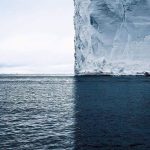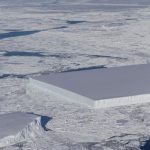Key Takeaways:
- Human activities have transformed Earth’s landscapes drastically over the years, and NASA’s “Images of Change” series captures these transformations through before-and-after satellite images.
- Deforestation in Brazil’s Amazon rainforest, rapid urban expansion in Cancún, artificial islands in Dubai, and oil sands mining in Canada showcase the human impact on natural environments.
- Chernobyl’s exclusion zone witnesses a unique rebound of wildlife post-nuclear disaster, while controlled fires in Namibia highlight the importance of maintaining natural ecosystem processes.
- The Colorado River’s management struggles, the Aral Sea’s tragic decline due to water diversion, and the alarming retreat of glaciers in Alaska and Antarctica underscore the consequences of changing landscapes.
- Positive environmental shifts include reduced nitrogen dioxide pollution in the US, the recovery of Iraq’s marshes after Saddam Hussein, and the healing of the ozone layer following global efforts to curb ozone-depleting chemicals.
- Solar farms in California exemplify steps towards cleaner energy, but also raise concerns about potential ecological impacts
Human-driven alterations to Earth’s landscapes have reshaped the planet’s visage, with NASA’s captivating “Images of Change” series serving as a chronicle of these remarkable transformations. These before-and-after satellite images lay bare the profound impact of human activities on the environment, revealing both the wonders and perils of our dominion over nature.
From the vast Amazon rainforest in Brazil to the bustling city of Cancún, Mexico, the changes are vividly apparent. Deforestation to accommodate agriculture, rapid urban expansion, creation of artificial islands, and oil sands mining all bear witness to humanity’s far-reaching influence. Yet, alongside these transformations, there are tales of resurgence. Chernobyl’s abandoned landscapes have experienced an astonishing revival of plant and animal life, freed from the presence of human activity and radiation’s aftermath.
As we marvel at these shifts, we must also confront the challenges posed by our actions. Controlled fires in Namibia reveal the delicate balance required to maintain thriving ecosystems, while the shrinking glaciers of Alaska and Antarctica sound a dire warning of the consequences of a warming planet. Our management of resources, exemplified by the Colorado River’s dwindling reservoirs and the tragic fate of the Aral Sea, reflects the delicate interplay between human need and environmental sustainability.
Amid these narratives of change, there are rays of hope. The decline in nitrogen dioxide pollution over the United States demonstrates our capacity to address environmental concerns when concerted efforts are made. The revitalization of Iraq’s marshes and the healing of the ozone layer stand as powerful examples of humanity’s ability to rectify past mistakes and strive for a more harmonious coexistence with the natural world.
Yet, even as we transition towards cleaner energy, as seen in California’s burgeoning solar farms, we must remain vigilant of unintended consequences. The landscape’s transformation is an ongoing saga, a reminder that our actions hold the power to shape the Earth’s future as much as its past.
Read full article on VOX
#1

Rainforests get swallowed by farms in Brazil. Satellite images of Rondônia in western Brazil, taken in 1975 (left) and 2009 (right). (NASA, Images of Change)
#2 Cancún expands at a stunning rate

Cancún, Mexico, seen in 1979 and 2009. (NASA, Images of Change)
#3 Dubai builds a chain of artificial islands

Dubai, United Arab Emirates, seen in 2001 and 2011. (USGS and NASA)
#4 The oil sands boom in Alberta, Canada

Open pit mines near Fort McMurray in Alberta, Canada, seen in 2000 and 2007. (NASA, Images of Change)
#5 Ukraine’s landscape recovers after Chernobyl

Chernobyl Nuclear Power Plant, seen in 1986 and 2011. (NASA, Images of Change)
#6 A manmade fire rages in Namibia

Etosha National Park in Namibia. The white area is the Etosha Pan, a salt-encrusted lake bottom. The dark brown area shows where a fire burned in June 2012. (NASA, World of Change)
#7 Efforts to tame the Colorado River hit a snag

Lake Powell, seen on March 25, 1999, and May 13, 2014. (NASA, Images of Change)
#8 The Aral Sea, once massive, nearly vanishes

The Aral Sea, seen in 2000 and 2014. (NASA, Images of Change)
#9 Alaska’s Columbia Glacier recedes rapidly

Alaska’s Columbia Glacier, seen on July 28, 1986, and July 2, 2014. (NASA, Images of Change)
#10 Antarctica’s Larsen B ice shelf disintegrates

Larsen-B ice shelf in Antarctica, seen on January 31, 2002 and February 17, 2002. (NASA, World of Change)
#11 Iraq’s marshes recover after Saddam Hussein

The wetlands of Mesopotamia in 2000 and 2006. The map shows standing irrigated crops (light green), standing water (dark blue), vegetation (dark green), and bare ground (brown). (NASA, World of Change)
#12 Solar farms sprout up in California

The Topaz Solar Farm in California, seen in 2011 and 2015. (NASA, World of Change)


